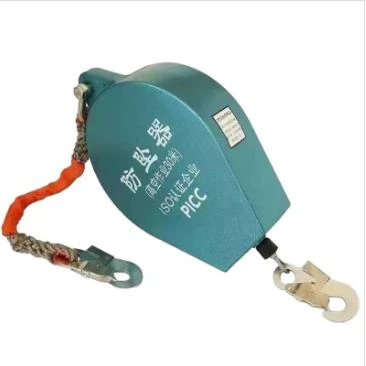


Understanding Fall Protection Tools Ensuring Safety in the Workplace
In workplaces where employees are exposed to heights—whether in construction, maintenance, or any other field—fall protection is paramount. Falls from heights are one of the leading causes of workplace injuries and fatalities. Therefore, it is essential to understand the various fall protection tools available and how they can safeguard workers.
Types of Fall Protection Tools
1. Personal Fall Arrest Systems (PFAS) A Personal Fall Arrest System is a combination of equipment that is designed to safely stop a person from falling. This system typically includes a full-body harness, a lanyard, and an anchorage point. The full-body harness distributes the forces of a fall over the body, reducing the chance of injury. Lanyards often come equipped with a shock absorber to help mitigate the impact of a fall.
2. Guardrails Guardrails are passive fall protection systems. These fixed barriers are installed around edges and openings, preventing workers from accidentally falling. Guardrails are often made of durable materials such as wood or metal and should meet safety standards to ensure they can withstand the required force.
3. Safety Nets Safety nets are another form of passive fall protection. They are typically used in situations where other forms of protection are impractical. Nets are installed in areas where workers may fall, catching individuals and minimizing injury risk. Each safety net must be able to withstand significant falling weights and be regularly inspected for integrity.
4. Lifelines Lifelines are flexible cable systems that allow workers to move while remaining secured. They can be horizontal or vertical lines attached to fixed anchor points. When a worker is connected to a lifeline with a lanyard or harness, they can roam within a designated area and still be protected from falls.
5. Anchor Points The effectiveness of fall protection systems relies heavily on secure anchor points. These are the points to which the fall protection equipment is attached. Proper installation and regular inspection of anchor points are crucial for ensuring the safety of workers utilizing fall protection tools.

6. Positioning Devices These tools allow workers to be supported and secured while maintaining freedom of movement. Positioning devices, such as ropes, allow workers to lean back against a harness while working at height, keeping them safe and stable without restricting their ability to perform tasks.
Regulations and Standards
To ensure the safety of workers, fall protection tools are subject to various regulations and standards. In the United States, the Occupational Safety and Health Administration (OSHA) sets guidelines for fall protection in the workplace. Employers must provide the necessary fall protection systems on elevated work sites, and workers must be trained to use these tools correctly. Regular inspections and maintenance of fall protection equipment are also crucial to ensure its integrity and effectiveness.
Training and Education
Implementing fall protection systems is only part of creating a safe work environment. Comprehensive training programs are essential for educating employees about the proper use of fall protection tools. Workers must understand how to properly wear harnesses, secure anchor points, and utilize tools like lifelines or safety nets. Regular drills and refreshers can help reinforce this knowledge, keeping safety at the forefront of workplace culture.
Conclusion
Fall protection tools are critical components in ensuring the safety of employees working at heights. Understanding the various types of fall protection systems, their proper use, and adhering to safety regulations can prevent accidents and save lives. Employers must prioritize investing in quality fall protection tools and training their workforce to utilize them effectively. By fostering a culture of safety, organizations can protect their most valuable asset—their employees—reducing risks and enhancing productivity in the process.



